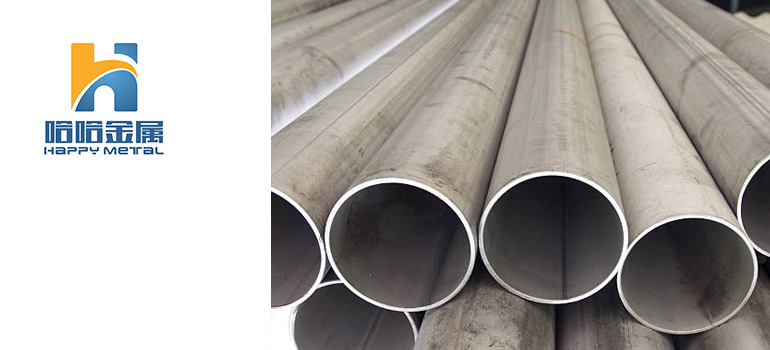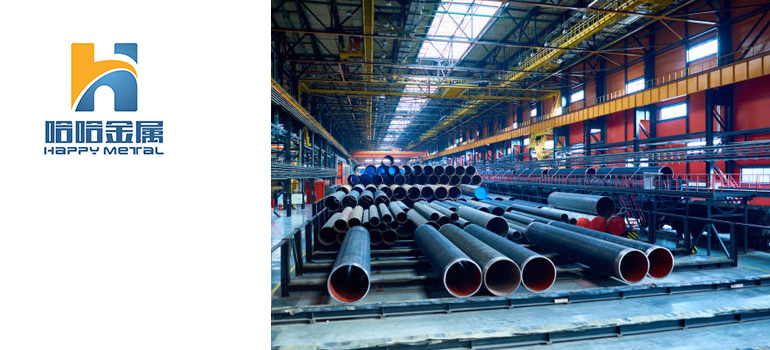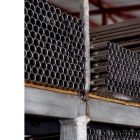Summary:
How to Choose the Right Carbon Steel Pipe Dimensions: A Comprehensive Overview
What Are Carbon Steel Pipe Dimensions?
Factors to Consider When Choosing Carbon Steel Pipe Dimensions
How to Measure Carbon Steel Pipe Dimensions Accurately
Comparing Different Carbon Steel Pipe Dimensions for Specific Applications
What Are Carbon Steel Pipe Dimensions?
When it comes to carbon steel pipes, dimensions refer to the physical measurements that define the size and shape of the pipe. These dimensions include the pipe’s outer diameter, inner diameter, wall thickness, and length. Understanding these dimensions is crucial because they directly impact how the pipe will perform in various applications. For instance, a pipe with a larger diameter can handle more flow, but it might also be heavier and more expensive. Conversely, a smaller diameter pipe is lighter and less costly, but it may not be suitable for high-flow applications.
Importance of Correct Dimensions in Different Applications
Choosing the right dimensions for carbon steel pipes is not just about fitting them into a space—it’s about ensuring that they meet the specific requirements of your project. For industrial applications, precise dimensions are essential to maintain safety, efficiency, and performance. For example, in a high-pressure pipeline system, the dimensions must be accurate to withstand the internal stresses. In residential plumbing, while the pressures are lower, dimensions still need to be correct to ensure proper water flow and prevent leaks.
Common Standards and Specifications for Carbon Steel Pipes
There are several industry standards and specifications that dictate the dimensions of carbon steel pipes. The most commonly referenced standards include ASTM (American Society for Testing and Materials) and ISO (International Organization for Standardization). These standards provide detailed guidelines on dimensions, tolerances, and materials to ensure consistency and safety. For instance, ASTM A53 and ASTM A106 are widely used specifications for carbon steel pipes, with specific dimensions for different grades and applications. Familiarity with these standards can help you choose pipes that meet industry requirements and ensure reliable performance in your system.
Factors to Consider When Choosing Carbon Steel Pipe Dimensions
When selecting carbon steel pipe dimensions, it’s crucial to consider the specific requirements and standards of the industry you’re working in. Different industries have varied demands based on factors like pressure, temperature, and the type of fluids being transported. For example, the oil and gas industry often requires pipes with high pressure ratings and specific dimensions to handle the extreme conditions found in drilling and transportation. Understanding these requirements helps ensure compliance with safety regulations and operational standards. Consulting industry standards such as ASTM, API, or ISO can provide you with the precise dimensions needed for your application.
Environmental and Operational Conditions
The environment and operating conditions where the pipes will be used can significantly influence your choice of dimensions. Pipes exposed to extreme temperatures, corrosive substances, or high-pressure environments need to be sized appropriately to withstand these conditions. For instance, in a high-temperature environment, pipes with thicker walls may be necessary to handle the thermal expansion and prevent deformation. Similarly, in corrosive environments, you might need to select pipes with coatings or treatments, and their dimensions should ensure compatibility with these protective measures. Evaluating the operating environment will help you select the dimensions that offer both durability and performance.
Cost and Availability of Different Dimensions
Cost is always a consideration when choosing pipe dimensions. Larger pipes or those with special dimensions can be more expensive both in terms of initial purchase and long-term maintenance. Additionally, the availability of different sizes can affect project timelines. Sometimes, opting for standard dimensions that are readily available can help reduce costs and avoid delays. It’s a balance between getting the precise dimensions needed for your application and staying within budget constraints. Always consider getting quotes from multiple suppliers and check if custom dimensions will significantly impact the overall cost.
Compatibility with Existing Systems
If you’re integrating new pipes into an existing system, ensuring compatibility with the current infrastructure is essential. The dimensions of the new pipes should match or be compatible with those of the existing pipes, fittings, and connectors. Discrepancies in dimensions can lead to issues such as leaks, poor performance, or the need for additional adapters and modifications. Conducting a thorough review of the existing system and its specifications will help you select dimensions that seamlessly fit and function within the current setup.
Future Expansion and Maintenance Needs
Lastly, consider the potential for future expansion or maintenance needs when choosing pipe dimensions. If there’s a possibility that the system may need to handle higher flows or pressures in the future, selecting slightly larger dimensions now might save you from costly modifications later. Additionally, consider how easy it will be to maintain and repair the pipes. Larger or non-standard dimensions might require specialized tools or techniques for maintenance, which could affect operational efficiency. Planning for future needs can help ensure that your system remains adaptable and cost-effective over time.
How to Measure Carbon Steel Pipe Dimensions Accurately

Tools and Techniques for Accurate Measurement
Accurate measurement of carbon steel pipe dimensions is crucial for ensuring that pipes fit properly and perform as expected in their applications. Here are the essential tools and techniques to achieve precise measurements:
Calipers: For measuring the outer diameter (OD) and wall thickness of pipes, calipers—especially digital calipers—provide high precision. When using calipers, ensure they are zeroed correctly before taking measurements to avoid errors.
Tape Measures: For longer pipes or when measuring lengths, a heavy-duty tape measure is commonly used. For accuracy, ensure the tape is straight and taut during measurement to prevent sagging.
Micrometers: For even greater precision, particularly in measuring wall thickness, micrometers are ideal. They can measure small dimensions with high accuracy and are useful for checking tolerance levels.
Pipe Gauges: Specialized pipe gauges are designed to measure pipe dimensions, including OD and wall thickness, with ease. These gauges often have multiple settings to accommodate different pipe sizes and standards.
Laser Measurement Tools: For modern and highly accurate measurements, laser tools can be used. These are especially useful for measuring lengths and diameters with minimal physical contact.
Common Measurement Errors and How to Avoid Them
To ensure accurate measurements, it’s essential to be aware of and avoid common errors:
Misalignment: Ensure that the measuring tool is aligned correctly with the pipe. Misalignment can lead to inaccurate readings. For instance, calipers should be perpendicular to the pipe’s surface.
Temperature Effects: Temperature fluctuations can cause expansion or contraction of the pipe material. Measure pipes at a consistent temperature or account for thermal expansion if working in varying temperatures.
Tool Calibration: Regularly calibrate measurement tools to ensure their accuracy. Tools that are out of calibration can produce incorrect measurements, leading to potential issues in installation and performance.
Human Error: Take multiple measurements and use the average value to reduce the impact of human error. Ensure that measurements are recorded precisely and double-checked for consistency.
Surface Conditions: Dirt, rust, or coatings on the pipe’s surface can affect measurements. Clean the surface before measuring to ensure that the tool makes accurate contact with the pipe.
Understanding Tolerances and Variations in Dimensions
When measuring carbon steel pipes, it’s important to understand the tolerances and permissible variations specified by industry standards. Tolerances are the acceptable limits within which dimensions can vary from the nominal size:
Industry Standards: Refer to standards such as ASTM, ISO, or ASME for the tolerances applicable to the specific pipe dimensions. These standards provide detailed guidelines on acceptable variations for different pipe sizes and grades.
Pipe Manufacturing Specifications: Manufacturers often provide tolerance ranges for their pipes. These specifications help ensure that the pipes meet the required quality and performance criteria.
Practical Implications: In practical applications, ensure that the pipe dimensions fall within the specified tolerances to avoid issues like leaks, fitting problems, or performance inefficiencies. Understanding these tolerances can also help in troubleshooting and quality control processes.
By using the right tools, being aware of common errors, and understanding tolerance levels, you can accurately measure carbon steel pipe dimensions and ensure they meet your project’s requirements.
Comparing Different Carbon Steel Pipe Dimensions for Specific Applications
When selecting carbon steel pipes for various applications, it’s essential to compare different dimensions to ensure optimal performance and safety. Here’s how different pipe dimensions can affect specific applications:
Residential vs. Industrial Use
Residential Use: In residential applications, such as plumbing and heating systems, pipe dimensions are generally smaller. Standard residential pipes might range from 1/2 inch to 2 inches in diameter. These dimensions are sufficient for handling typical household water flow and pressure. The focus in residential settings is often on ease of installation and cost-effectiveness rather than high performance under extreme conditions.
Industrial Use: Industrial applications, including oil and gas, manufacturing, and chemical processing, often require larger and more robust pipes. Dimensions can range from several inches to over 24 inches in diameter, depending on the specific requirements. Larger pipes are necessary to handle higher flow rates, greater pressure, and more demanding environmental conditions. Industrial pipes are also designed with thicker walls to ensure durability and safety under extreme operational stresses.
High Pressure vs. Low Pressure Applications
High Pressure Applications: Pipes used in high-pressure applications, such as in hydraulic systems or high-pressure steam lines, need to have dimensions that can withstand substantial internal forces. Typically, these pipes have thicker walls and are made from higher-grade materials to handle the increased pressure without deformation or failure. For example, a carbon steel pipe used in a high-pressure steam system might have a diameter of 4 inches with a wall thickness of 0.5 inches or more.
Low Pressure Applications: Pipes for low-pressure applications, such as residential water supply or low-pressure gas lines, can have thinner walls and smaller diameters. These dimensions are sufficient to handle the lower internal pressures without the added expense of thicker walls or stronger materials. For instance, a standard residential water pipe might have a diameter of 1 inch with a wall thickness of 0.1 inches.
Impact of Pipe Dimensions on Performance and Durability
Flow Rate and Capacity: The diameter of a carbon steel pipe directly affects its flow rate and capacity. Larger diameters allow for higher flow rates and are necessary for applications with substantial fluid or gas throughput. In contrast, smaller diameters are suitable for applications with lower flow requirements. For example, a 6-inch diameter pipe can transport more water than a 2-inch pipe, which is crucial for applications such as large-scale irrigation systems or industrial cooling systems.
Structural Integrity: The wall thickness of a pipe influences its ability to withstand internal and external pressures. Thicker walls provide better structural integrity and resistance to stress, making them suitable for high-pressure applications. Thinner walls, while more cost-effective, might not be suitable for applications where high strength is required. For example, a pipe with a wall thickness of 0.25 inches might be sufficient for a low-pressure gas line but inadequate for a high-pressure steam line.
Durability and Lifespan: The dimensions of the pipe can also affect its longevity. Larger and thicker pipes generally have a longer lifespan due to their ability to handle higher stresses and resist wear. In corrosive or harsh environments, thicker pipes or those with additional protective coatings are often used to enhance durability. For instance, a thick-walled pipe with a corrosion-resistant coating will typically last longer in a chemical processing plant compared to a thin-walled pipe without protection.
Cost Considerations
Material and Fabrication Costs: Larger and thicker pipes are more expensive to manufacture and install. While they offer better performance and durability, they also increase the overall cost of the project. In contrast, smaller and thinner pipes are more cost-effective but may not meet the requirements for more demanding applications.
Maintenance and Replacement Costs: Pipes that are dimensionally appropriate for their application will generally require less maintenance and have fewer issues, leading to lower long-term costs. Over-specifying dimensions can lead to unnecessary expenses, while under-specifying can result in higher maintenance and replacement costs.
By comparing different carbon steel pipe dimensions with respect to the specific needs of your application, you can make informed decisions that balance performance, durability, and cost. Understanding these factors helps ensure that the selected pipes meet the operational demands and provide reliable, long-term performance.




